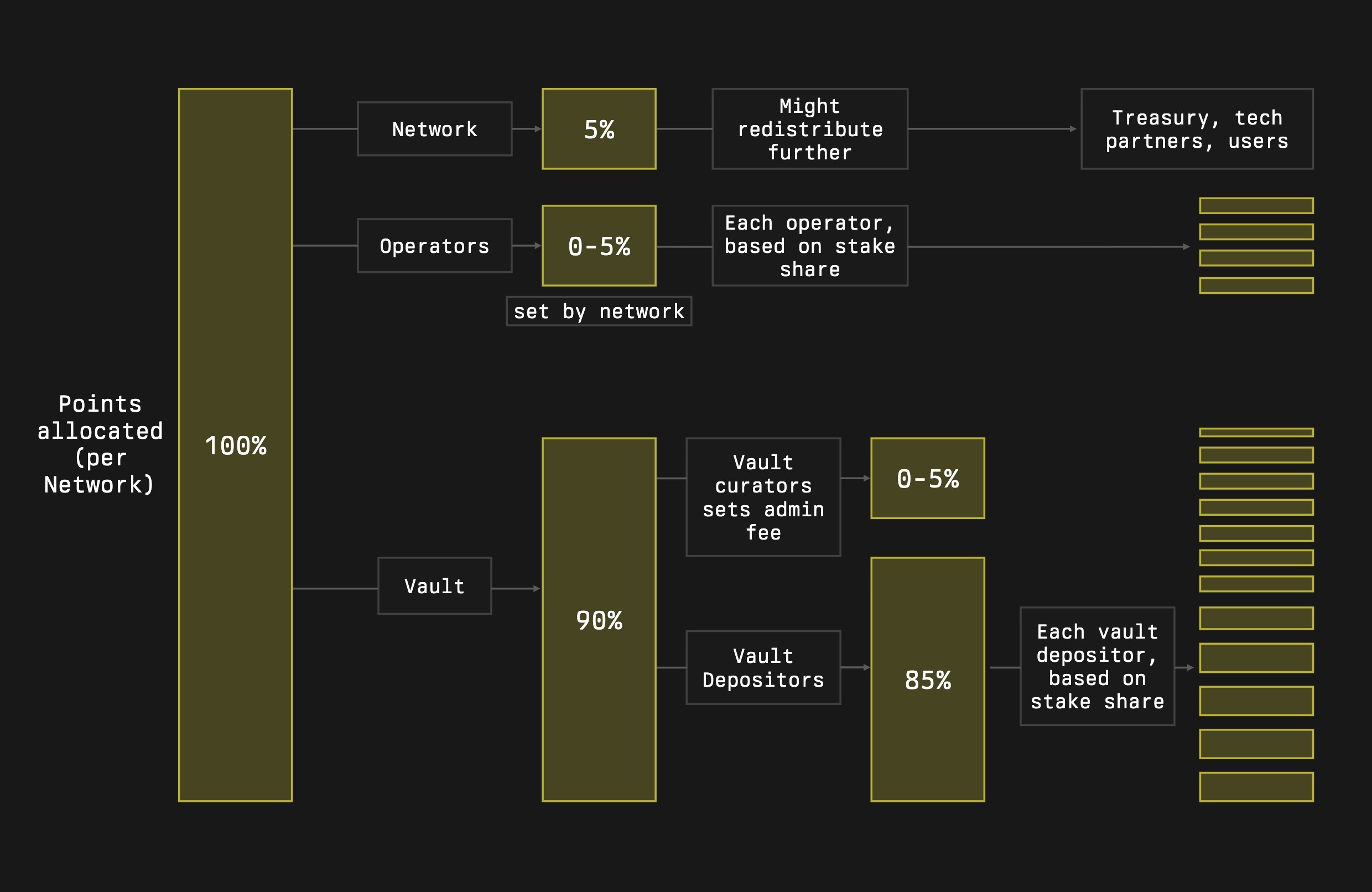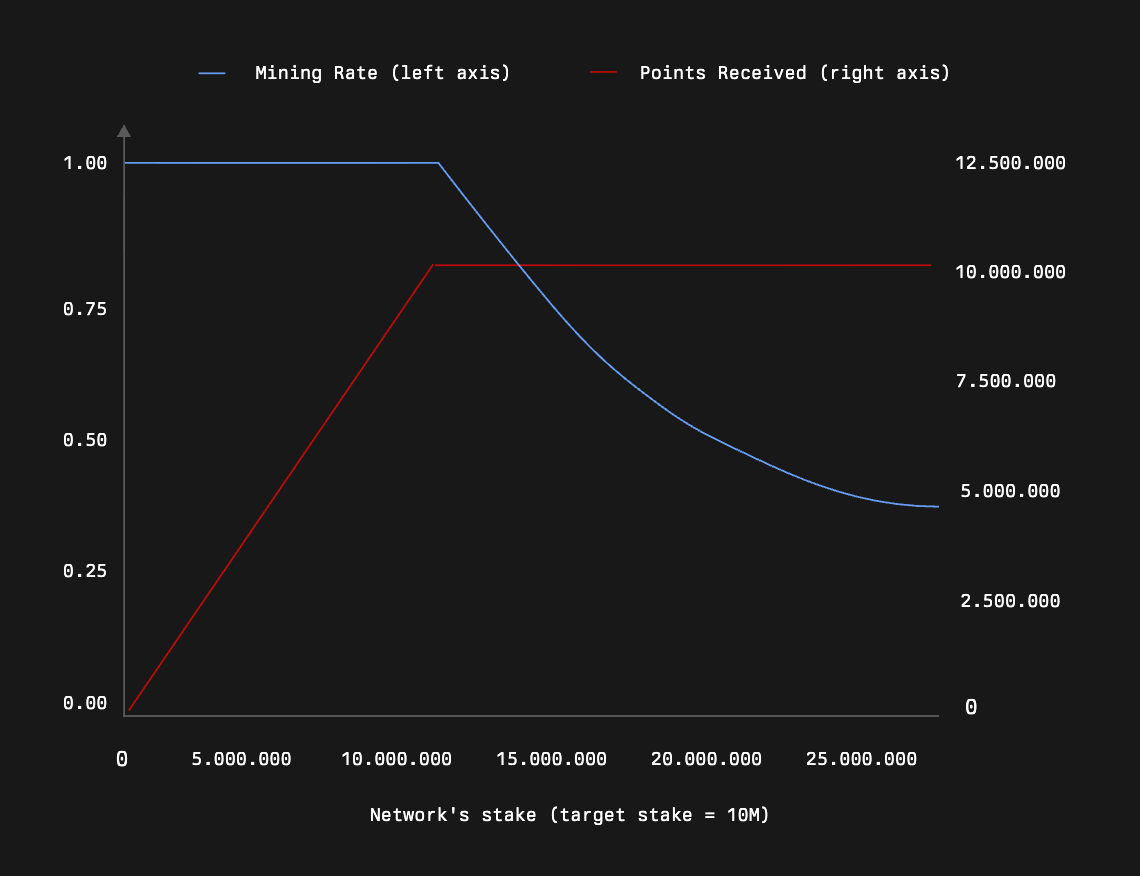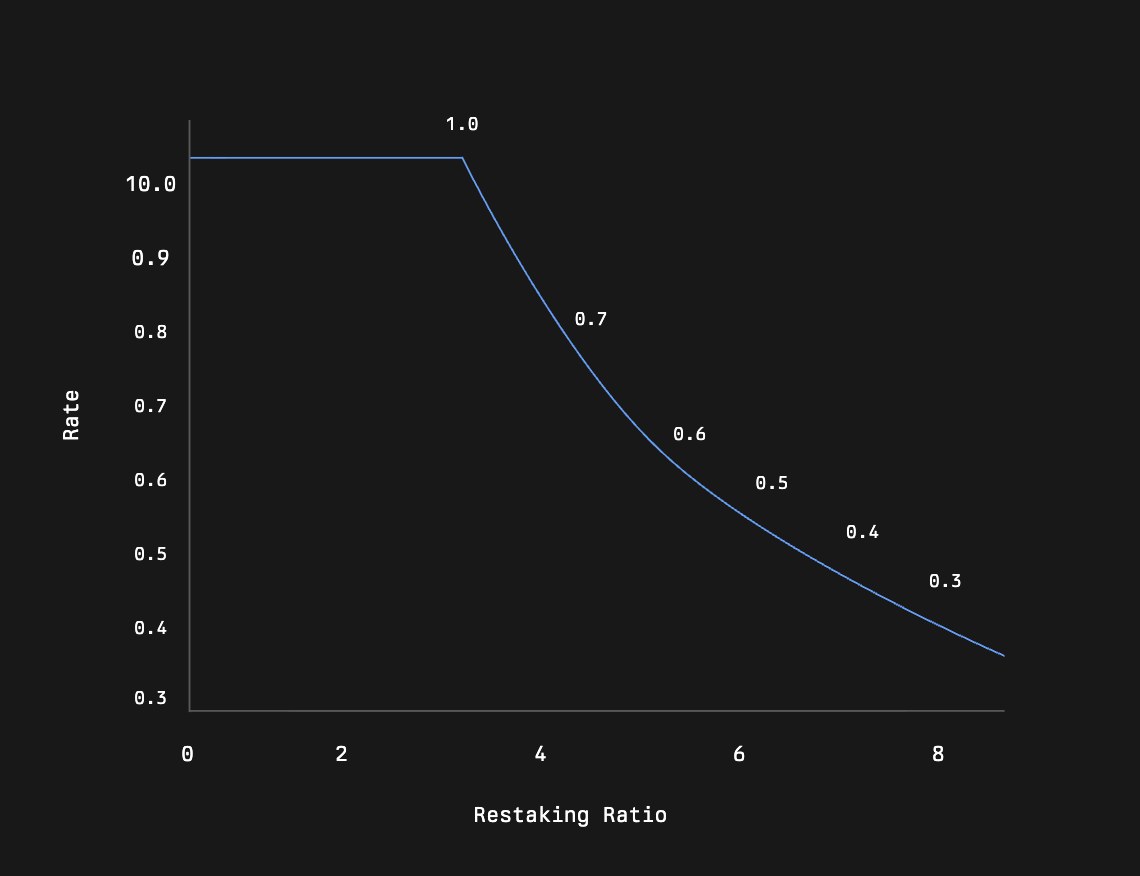Deep Dive into Symbiotic Points
Introduction
Symbiotic is evolving its points system. With the release of Points 2.1, we are introducing a refined incentive model that better rewards capital that is actively deployed and securely distributed. This upgrade brings more nuance to how points are earned, placing greater weight on risk-aware capital allocation and encouraging healthy participation from networks, vaults, and operators.
At the core of this new system is a dynamic mechanism that allocates points based on three main criteria: the amount of stake in a network, how that stake is distributed across vaults, and how securely it is used. The system ensures capital is not just sitting idle but actually contributing to the safety and scalability of onchain infrastructure.
Points Distribution Across Stakeholders
Points are allocated on a per-network basis. From the total points assigned to each network, a small portion goes directly to the network and its operators, while the majority is distributed to vaults. Within each vault, curators may take an admin fee, with the remaining points distributed to depositors in proportion to their stake. This structure ensures that all contributors to the system are fairly rewarded, without over-incentivizing any particular group.

Figure 1 - Points Distribution Across Stakeholders
Points Rate
A key improvement introduced in Points 2.1 is the use of a points rate. This rate adjusts a network’s rewards based on how close it is to an optimal staking profile.
The total points a network receives is calculated as:
The points rate combines two values (each ranging from 0 to 1): a mining rate and a security rate.
Mining Rate
Each network has a target stake - ****the amount of funds required to meet its security needs. Some networks require more stake, while others need less. To prevent overstaking, the Symbiotic team, in collaboration with networks, sets a specific target stake for each one.
The mining rate is based on a network’s current stake relative to its target stake. The concept is straightforward:
- If a network’s current stake is below its target, the mining rate is 1, meaning each dollar staked earns 1 point (simplified).
- Once the network reaches its target stake, the mining rate decreases, ensuring no additional points are earned for excess staking.
This mechanism helps maintain a balanced and secure staking environment across networks.

Figure 2 - Mining Rate as a Function of Network Stake
Security Rate
The security rate is a weighted average of two key factors:
- Restaking Score of underlying vaults (double weighted).
- Vaults Stake Decentralization.
These factors ensure that stake is securely and efficiently distributed, promoting a more resilient network.
Restaking Score
Restaking measures the ratio between the total value locked (TVL) in a vault and the vault’s stake. In other words, it indicates how many networks are utilizing the funds within a vault.
Example: If a vault has a TVL of 1M and a stake of 3M, the restaking ratio is:
3 / 1 = 3
A higher restaking ratio makes capital more efficient for networks but also increases risk due to potential slashing. To balance cost efficiency and risk, the Symbiotic team sets a target restaking ratio. If a vault exceeds this target, its restaking score decreases.
The current target restaking ratio is 3. Once a vault surpasses this threshold, its restaking score drops rapidly.

Figure 3 - Restaking Score as a Function of Restaking Ratio
A network’s restaking score is calculated as the stake-weighted average of the restaking scores of its underlying vaults.
Example: Suppose a network has two vaults:
- Vault 1 has a restaking ratio of 0.8 and a stake of 1M.
- Vault 2 has a restaking ratio of 0.6 and a stake of 3M.
The network’s overall restaking score is:
(0.8 * 1 + 0.6 * 3) / (1+3) = 0.65
The restaking score is crucial because it affects both networks and vaults. Vaults are also penalized if their restaking ratio is too high - the points they receive from the network are multiplied by their restaking score.
Vaults Stake Decentralization
To measure how distributed stake is across vaults, we use a decentralization score based on the complement of the Herfindahl–Hirschman Index (HHI). It ranges from 0 (fully centralized) to 1 (fully decentralized), with higher values indicating lower risk through broader stake distribution.
Conclusion
Points 2.1 is live and represents an important step forward for incentive design in shared security. It rewards useful capital, discourages inefficient allocation, and supports a more resilient staking environment across the entire network.
To track how many points you are earning and whether your capital is working optimally, you can explore the Symbiotic Points Checker on Dune. It provides a real-time breakdown of your performance under Points 2.1.